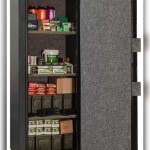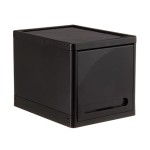Essential Aspects of the Largest Storage Unit Size Computer
In the digital age, where data is constantly being generated and consumed, the demand for storage space has skyrocketed. Businesses and individuals alike are seeking ways to accommodate their ever-growing data needs, and one solution is investing in a large-scale storage unit computer.
Understanding the essential aspects of the largest storage unit size computer is crucial when making an informed decision. This article will delve into the key considerations to keep in mind, empowering you to select the best system for your specific requirements.
Storage Capacity: The Core Consideration
The storage capacity of a unit computer refers to the total amount of data it can store. This is the most critical aspect to consider, as it determines the device's ability to meet your current and future storage needs.
When assessing storage capacity, it's essential to consider the type of data you will be storing. Media files, such as videos and images, require significantly more space than text documents. Therefore, it's wise to estimate the amount and type of data you need to store now and anticipate potential growth to make an accurate assessment.
Drive Type: HDD vs. SSD
There are two primary drive types used in storage unit computers: hard disk drives (HDDs) and solid-state drives (SSDs). Each type offers unique advantages and considerations:
Hard Disk Drives (HDDs)
- Lower cost: HDDs are generally more affordable than SSDs, especially for large capacities.
- Higher capacity: HDDs typically offer higher storage capacities compared to SSDs.
- Slower speed: HDDs have moving parts, resulting in slower data access speeds compared to SSDs.
Solid-State Drives (SSDs)
- Faster speed: SSDs have no moving parts, enabling much faster data access speeds.
- Compact size: SSDs are significantly smaller and lighter than HDDs, making them suitable for space-constrained environments.
- Higher cost: SSDs are typically more expensive than HDDs, especially for large capacities.
RAID Configuration: Enhancing Data Protection and Performance
RAID (Redundant Array of Independent Disks) is a data storage technology that combines multiple physical disks into a single logical unit. It offers several benefits:
- Data protection: RAID configurations provide data redundancy, ensuring that your data remains accessible even if one or more physical disks fail.
- Performance enhancement: Some RAID configurations improve data access speeds by distributing data across multiple disks.
When selecting a storage unit computer, consider the RAID configuration options it supports to determine which best suits your data protection and performance requirements.
Connectivity Options: Ensuring Data Accessibility
The connectivity options of a storage unit computer determine how it can be integrated into your network and accessed by different devices.
Common connectivity options include Ethernet, Wi-Fi, and Thunderbolt. Ethernet provides a wired connection, offering stable and fast data transfer speeds. Wi-Fi allows for wireless access, making it convenient for sharing data across devices. Thunderbolt is a high-speed interface designed specifically for connecting external storage devices.
Consider your preferred methods of data access and select a storage unit computer that supports the necessary connectivity options.
Additional Features to Consider
Beyond the core aspects, there are additional features that may enhance the functionality of your storage unit computer:
- Remote access: Some storage unit computers support remote access, allowing you to manage and access data from anywhere with an internet connection.
- Data encryption: Encrypting your data ensures its protection against unauthorized access, especially when dealing with sensitive information.
- Monitoring and management software: Advanced storage unit computers often include software for monitoring disk health, managing RAID configurations, and optimizing performance.
Evaluate your specific requirements and consider these additional features to make an informed choice.
Conclusion
Selecting the largest storage unit size computer requires careful consideration of the essential aspects discussed in this article, including storage capacity, drive type, RAID configuration, connectivity options, and additional features.
By understanding these key factors, you can make an informed decision that aligns with your data storage needs, ensuring optimal performance, reliability, and protection for your valuable digital assets.

What Is A Yottabyte Yb And How Big It

Tb Vs Gb Is A Terabyte Bigger Than Gigabyte Techtarget
Byte Samsung Semiconductor Usa

What Is A Gigabyte Gb And How It Measured

Introduction To Computers Data Sizes And Sds

What Is Petabyte Definition From Techtarget

Units Of Storage In Computer Classnotes Ng

Data Storage Units Kilobytes Megabytes Gigabytes Terabytes

Data Storage Units Kilobytes Megabytes Gigabytes Terabytes Lesson Study Com

Memory Sizes Explained Gigabytes Terabytes And Petabytes In Context
Related Posts








